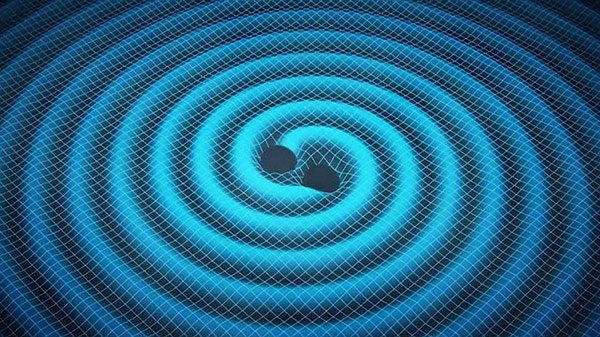
Visualization - Gravitational waves generated by a binary system. (Photo/NASA)
Scientists said on Thursday they have for the first time detected gravitational waves, ripples in space and time hypothesized by physicist Albert Einstein a century ago, in a landmark discovery that opens a new window for studying the cosmos.
Discovering gravitational waves would be a huge deal for physics, cosmology, and our understanding of the universe at large. But if you're not a scientist studying one of the aforementioned fields, it's possible you've never heard of these mysterious ripples. So what are gravitational waves and why is the discovery so significant?
What are gravitational waves?
Gravitational waves are disturbances in space-time, the very fabric of the universe, that travel at the speed of light. The waves are emitted by any mass that is changing speed or direction. The simplest example is a binary system, where a pair of stars or compact objects (like black holes) orbit their common center of mass.
We can think of gravitational effects as curvatures in space-time. Earth's gravity is constant and produces a static curve in space-time. A gravitational wave is a curvature that moves through space-time much like a water wave moves across the surface of a lake. It is generated only when masses are speeding up, slowing down or changing direction.
Who detected gravitational waves?
The new discovery, accepted for publication in the journal Physical Review Letters, was made by the Laser Interferometer Gravitational-Wave Observatory Scientific Collaboration, a group of more than 1,000 scientists from universities around the United States as well as in 14 other countries. LIGO Director David Reitze announced on Thursday at a press conference that they detected gravitational waves. "We did it."
On September 14 of last year, the LIGO location in Livingston, Louisiana picked up a gravitational-wave signal, and seven milliseconds later, its fellow observatory in Hanford, Washington detected an identical signal. This signal exactly matched the calculated behavior of gravitational waves produced when two black holes collide.
Why is the discovery so significant?
While opening a door to new ways to observe the universe, scientists said gravitational waves should help them gain knowledge about enigmatic objects like black holes and neutron stars. The waves also may provide insight into the mysterious nature of the very early universe.
The scientists said that because gravitational waves are so radically different from electromagnetic waves they expect them to reveal big surprises about the universe.
Everything we knew until now about the cosmos stemmed from electromagnetic waves such as radio waves, visible light, infrared light, X-rays and gamma rays. Because such waves encounter interference as they travel across the universe, they can tell only part of the story.
Gravitational waves experience no such barriers, meaning they offer a wealth of additional information. Black holes, for example, do not emit light, radio waves and the like, but can be studied via gravitational waves.
Einstein in 1916 proposed the existence of gravitational waves as an outgrowth of his ground-breaking general theory of relativity, which depicted gravity as a distortion of space and time triggered by the presence of matter. Until now scientists had found only indirect evidence of their existence, beginning in the 1970s.
Will this detection win a Nobel Prize?
It is nailed on. A certainty. As ever, the debate will be about the recipients and their place in the chain of discovery. Who will be regarded as having made the most significant contribution? Will the recipients be theorists or experimentalists in that chain? One thing is clear: it is in the nature of science today that the really big questions tend to be answered with the aid of really big machines. And without the LIGO Collaboration's many hundreds of participants, who work across diverse fields on a range of complex technologies, this moment would never have come.
NASA, BBC contributed to the story.


















































